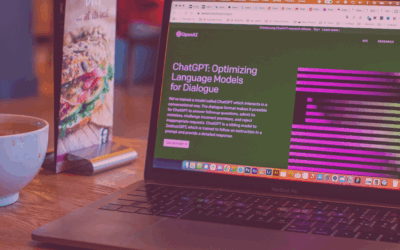What is Indexing in SEO?
In the vast and ever-evolving world of SEO, indexing stands out as a critical element, essential for the visibility and accessibility of your website on search engines. Indexing is the process by which search engines, like Google, gather and store information about your web pages, making them available to appear in search results. This is what enables your content to be discovered by potential visitors, directly impacting your site’s traffic and, by extension, its success.
The significance of indexing cannot be overstated. It is what connects your website to the rest of the internet through search engines. Without proper indexing, even the most well-crafted, informative, and engaging content remains hidden from your target audience. In essence, indexing is what breathes life into your website, allowing it to thrive in the competitive ecosystem of the internet. It ensures that your site is not just a collection of pages but a dynamic, discoverable entity in the vast digital landscape.
Why is Indexing Important?
In the world of SEO, indexing is like a passport for your website to enter the coveted Search Engine Results Page (SERP). Without it, Google might ignore your site, leading to a noticeable absence in search results. Neglecting indexing can reduce web traffic and harm your website’s ranking, making it crucial for website owners.
Indexing starts with Google’s crawlers, digital arachnids that navigate the web, seeking new sites to index. While they actively discover content, relying solely on chance encounters might result in your site being missed. Taking charge of the process is key, and you can manually request indexing through Google Search Console. This platform lets you communicate directly with Google, emphasizing the importance of your content.
When Google processes your indexing request, it evaluates factors like content quality, strategic keyword use, relevant meta tags, and the volume of words on a page. These elements influence whether your page deserves inclusion in the Google index.
Optimizing for SEO indexing is an ongoing journey. It’s not just about crafting words but strategically positioning your digital assets to align with Google’s preferences. Here’s a comprehensive guide to ensure your content is not only indexed but deemed valuable by discerning algorithms.
How Does Indexing Work?
The process of indexing is a fascinating journey through the vast expanse of the internet, orchestrated by Google’s sophisticated algorithms and tireless crawlers. These digital explorers traverse the web’s intricate network, jumping from link to link in search of new content to catalog. This exploration is continuous, with crawlers seeking out websites and pages to add to Google’s expansive index.
However, leaving your website’s fate to the whims of these autonomous crawlers is a gamble. They might eventually stumble upon your site, but there’s no guarantee of when—or if—that will happen. To navigate this uncertainty, the best course of action is to take matters into your own hands by using Google Search Console. This tool allows you to directly request indexing for your site, ensuring Google’s crawlers don’t overlook your content.
During this indexing request, Google doesn’t just superficially glance at your pages. It conducts a thorough evaluation, considering the quality of your content, the relevance and placement of keywords, the clarity and purpose of your meta tags, and even the volume of words on each page. This meticulous process ensures that only content that adds value and meets Google’s standards makes it into the index, ready to be discovered by users worldwide.
Optimizing Your Website for Indexing
Optimizing your website for indexing is a pivotal aspect of SEO that ensures your site is both discoverable and favorably evaluated by search engines. This optimization process involves a series of strategic actions aimed at making your site more accessible and comprehensible to search engine crawlers, thereby enhancing its chances of being indexed and ranked effectively.
Utilizing Google Search Console for Issue Identification
Google Search Console is an indispensable tool in the arsenal of website optimization. It acts as a bridge between your website and Google’s search engine, providing detailed insights into how Google views and indexes your site. Regularly monitoring the Search Console can identify and rectify issues that might hinder your site’s indexing, such as crawl errors or security issues. This tool allows you to submit your pages for indexing, view how your content appears in search results, and understand how users find your site, making it an essential component of your SEO strategy.
Manually Requesting Indexing for Overlooked Pages
Despite the sophistication of search engine crawlers, there are instances when certain pages might be inadvertently overlooked. In such cases, manually requesting indexing through Google Search Console becomes crucial. This proactive approach ensures that all your valuable content is considered by Google for indexing. By submitting individual URLs for indexing, you can expedite the process, especially for new or updated content, ensuring that your site remains up-to-date in Google’s search index.
Strategic Sitemap Submission
Sitemaps are like blueprints that guide search engine crawlers through your website, highlighting the structure and the most important content. Submitting a sitemap through Google Search Console is a strategic move that can significantly improve your site’s indexing. It not only ensures that search engines can easily find and crawl all your pages but also helps in prioritizing the content that you deem most important, thereby optimizing your site’s visibility and searchability.
Strategic Blocking of Undesirable Pages
Not all content on your website may be intended for indexing. Pages such as admin areas, duplicate content, or under-construction pages can dilute your site’s SEO if indexed. Utilizing tools like the robots.txt file or meta tags to strategically block these pages from search engine crawlers ensures that only the content you want to be indexed is visible. This selective approach to indexing helps maintain the quality and relevance of your site in search results.
Harnessing the Power of Internal Links
Internal linking is a powerful SEO tactic that not only enhances user navigation but also significantly aids in indexing. By creating a network of links within your site, you provide clear pathways for crawlers to discover and index content. Effective internal linking ensures that even the deepest pages on your site are accessible to search engines, improving the overall indexing and visibility of your content.
Optimizing your website for indexing is an ongoing process that requires attention to detail and a deep understanding of how search engines work. By implementing these strategies, you can ensure that your site is fully accessible to search engines, enhancing its potential to rank well in search results.
Improving Site Structure for Better Indexing
A well-organized site structure is crucial for effective indexing. Search engines prefer websites with clear hierarchies and logical navigation, as these make it easier for their crawlers to understand and index content. Ensuring your URLs are clean and descriptive, utilizing header tags (H1, H2, H3) to denote content hierarchy, and implementing breadcrumb navigation all contribute to a more navigable site. This not only enhances the user experience but also aids search engines in efficiently crawling your site, ensuring all valuable content is indexed. By optimizing your site structure, you’re laying a solid foundation for your SEO efforts, making your website more accessible to both users and search engines.
Monitoring and Maintaining Your Site’s Index Status
Keeping a close eye on your site’s index status is crucial for maintaining its visibility in search engine results. Regular checks using tools like Google Search Console can reveal which pages are indexed and highlight any issues preventing indexing. This proactive approach helps you quickly address problems such as crawl errors or pages blocked by robots.txt.
It’s also important to stay vigilant about changes to your website, like updates or redesigns, that could affect indexing. Ensuring that new or updated content is promptly indexed by submitting it through Google Search Console keeps your site current in search results.
Moreover, adapting to search engine algorithm updates is key to maintaining your site’s performance. Staying informed about SEO best practices and adjusting your strategies accordingly will help keep your site competitive and visible in search engine rankings.
In essence, a consistent and adaptive approach to monitoring and maintaining your site’s index status is vital for sustained SEO success.
In wrapping up, it’s essential to understand that the relationship between compelling content, successful indexing, and solid search engine rankings is complex and dynamic. This nuanced interplay demands ongoing engagement and expertise to navigate effectively. Here at BASE, we understand the intricacies of this digital dance and offer the insights and support needed to master it.
Adaptability is paramount in the fast-paced online environment. Regularly enhancing your content, aligning with Google’s evolving indexing guidelines, and adjusting to the latest SEO strategies are critical for maintaining a strong online presence. With BASE as your ally, you’re equipped to stay ahead in the SEO landscape, ensuring your digital efforts are both effective and enduring.
Utilize Google Search Console for Issue Identification:
Google Search Console is like your digital headquarters for ensuring effective indexing. It’s a powerful tool to examine your website, specifically looking for any problems with crawling and indexing. By utilizing this platform, you can pinpoint pages that Google’s spiders aren’t crawling, potentially escaping the indexing process.
Take advantage of Google Search Console to scrutinize your site, identifying any issues that might hinder proper indexing. This includes recognizing pages that are slipping through the cracks and escaping the attention of Google’s crawlers.
Manually Request Indexing for Overlooked Pages:
Using the information you gather from Google Search Console, be proactive in ensuring thorough indexing by manually requesting it for pages that might be overlooked. By taking this step, you guarantee that every part of your website is carefully cataloged by Google, enhancing the visibility of your content across search engine results. This hands-on approach helps to address potential gaps in the indexing process, ensuring that no valuable page is left unnoticed by search engine crawlers. Keep your site in top shape by actively managing the indexing of each page, maximizing its potential to appear prominently in search results.
Strategic Sitemap Submission:
Think of your website as a city, and a sitemap as its map. When you submit a sitemap through Google Search Console, it’s like giving Google directions. This helps the search engine efficiently find and index important pages on your site. This strategic move ensures that Google doesn’t overlook crucial elements of your digital space.
The submission of a sitemap is a practical step in overseeing your website’s indexing process. It serves as a concise guide, optimizing your site’s visibility by ensuring that vital components aren’t overlooked during indexing. Much like a city map streamlining navigation, a sitemap helps search engines delve into and comprehend your website’s structure, ultimately boosting its overall SEO performance.
Strategic Blocking of Undesirable Pages:
Recognizing the varying importance of different pages, Google offers strategic control over which ones get indexed. Protecting your ranking involves blocking low-quality pages. This can be achieved by implementing tactics such as using a 301 redirect for outdated pages or adding a no-index tag to content that doesn’t align with your optimization goals.
Consider the quality of your pages, understanding that not all contribute equally to your website’s performance. Google provides tools for managing this. By strategically blocking certain pages, you gain better control over the indexing process. Employ techniques like implementing a 301 redirect for outdated pages or adding a no-index tag for content misaligned with your optimization objectives. This proactive approach ensures that only the most valuable and relevant pages are considered for indexing, thereby enhancing your site’s overall SEO health.
Harness the Power of Internal Links:
Internal linking is not just about creating a seamless navigation experience for your users; it’s a powerful tool in aiding Google’s discovery of your pages. By strategically connecting your content, you guide Google through the intricate web of your website, ensuring no page is left unexplored.
In essence, optimization involves careful attention to detail and understanding what Google values. It’s about positioning your content strategically to align with these preferences.
In the vast world of SEO, where algorithms rule and digital landscapes are always changing, the trio of high-quality content, effective indexing, and SERP ranking forms the ultimate combination. This synergy isn’t just a lucky coincidence; it’s a deliberate strategy that webmasters must master to navigate the intricate digital terrain.
In wrapping up, it’s crucial to recognize that the connection between top-notch content, successful indexing, and a strong SERP ranking is more of a lively dance than a straightforward formula. Enter BASE, which not only provides the choreography but serves as a strategic framework for webmasters to conduct their digital symphony skillfully.
It’s worth keeping in mind that in the ever-changing internet landscape, adaptability is the golden key. Consistently fine-tune your content, stay in sync with Google’s indexing preferences, and let BASE be your steadfast guiding star in the vast expanse of SEO.



